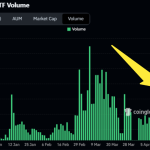The European payment solution wero, launched by the European company EPI (European payment Initiative) and owned by major European banks and payment companies, is in the starting blocks. This application will initially be used to make payments between individuals (P2P), then between individuals and professionals (P2 Pro) and, soon, it will be extended to online and in-store payments.
It relies on an instant payment infrastructure, with numerous associated services (security, loyalty) and can even support the digital euro. The challenge is strategic: allowing banks to compete with the Anglo-Saxon payment giants and allowing merchants to have a pan-European payment option. The linchpin of this titanic project, Martina Weimert, general director of EPI, reveals for The gallery the next steps in the deployment of wallet wero in France and Europe.
THE TRIBUEN – After a successful test last December of P2P transactions between a French bank and a German savings bank, what is the current timetable for the commercial deployment of your pan-European digital wallet wero?
MARINA WEIMERT – All tests were conclusive. The challenge is to connect as many banks as possible to the EPI platform and to integrate the functionalities of our wero digital wallet into mobile banking applications. Individuals will however have the possibility to download the wallet directly from our website. We wanted to keep these two approaches because not all banks will follow the same path. In France, however, the vast majority rely on integration into their mobile application, which is currently being done.
The commercial launch of the first use case, P2P transfer, should begin at the end of June in France, with deployment in Belgium and Germany during this summer. The Netherlands will come later, for essentially regulatory reasons.
Why are you starting with P2P transfer?
The P2P transfer is undoubtedly the most fun and simplest way to discover a new payment solution. It's not necessarily easy to make online purchases with a payment method that you don't yet know. On the other hand, repaying a friend a small amount seems easier. Payment is also a matter of trust and security. The consumer needs to be reassured about the reliability of a system before purchasing it.
And experience shows that P2P transfer is the use case that is most easily disseminated to the public. This was the case in France with Paylib which managed to take off thanks to P2P transfers, to the detriment of other use cases initially planned. For us, this first walk is extremely important to make ourselves known.
In this regard, should wero replace the Paylib interbank service in France?
We are indeed working on migrating the Paylib wallet to our platform. There will be a period of cohabitation between the two wallets to avoid a disruption in the use of the service. During this period, which will probably be a year to really allow time for discovery, it will therefore be possible to use one or the other of the solutions, which will obviously be able to communicate with each other.
Will this scheme be applied to other countries?
Yes, although the starting points may be different. In Belgium, for example, there is a Bancontact/Payconiq solution which offers P2P, online payment and proximity payment. The migration of this solution is therefore more complex to achieve and the cohabitation phase of the two solutions should last longer than in France. Discussions are still ongoing on online or local payment.
In the Netherlands, where we purchased the national payment solution iDEAL, we are also preparing a large-scale migration to the EPI platform for both the transfer aspect and the online payment aspect.
In Germany there is no national solution, or at least a centralized national solution. Migration of a block from one system to another is therefore not possible. So it will be bank by bank. On the other hand, there is a national solution for online payment with Giropay, with whom we are having discussions to see how we could migrate this acceptance network to our platform.
What is the planned timetable for other use cases, in particular online payment?
We plan to offer the online payment solution next summer, with a gradual ramp-up. In this use case, we must not only convince consumers but also e-retailers of the benefits of our solution. Our priority is certainly to expand our user base through P2P, but the consumer must also understand that the wero wallet will not be limited to P2P.
Isn't it risky to have adopted QR code technology which is very different from that of the bank card and its PIN code?
We actually work with a QR code for all use cases, including online payment. And it's true that at the beginning, a majority expressed reluctance towards the QR code. But since the pandemic, it has experienced rapid growth in Europe and its use has become largely commonplace, particularly among young people. This payment method is actually less complicated than the bank card which always requires entering a card number for online purchases.
With our solution, when paying online, simply choose the wero payment option and scan the QR code that opens to validate the transaction. No more information to enter, no last name, no first name, no card number or expiration date. It’s true that it’s another way to pay but it saves a lot of time. Switzerland recently adopted the QR code with the Twint solution which is very popular with the public, including for in-store payments, while all payment terminals accept NFC. Payment practices can take a long time but they can also be quick when everyone is acting in the same direction. Look at contactless payment! Who would question it today? However, there have been long debates about its usefulness, the risks of fraud, etc.
Your entire project is based on the idea that when it comes to payment, cooperation is better than competition. On what do you base this certainty?
On experience. Take the American example. The major banks are launching the Zelle wallet to counter the offensive of Paypal and its P2P payment solution Venmo which very quickly became the market leader. In five years, Zelle now represents five times the transaction volumes of Venmo. Which means that an interbank solution can compete with the tech giants, when there is a real desire to move together in the same direction. The bank card was also a great success when the banks also joined forces.
This was particularly the case in France. Banks today are all in the same boat: they have the same competitors, technological behemoths with significant financial resources, enormous masses of users and also different operating modes, because they are above all players American or Chinese. It is therefore imperative to make common cause in Europe and to share investments and find synergies.
Don't you fear the proliferation of wallet offers which risks boring consumers and merchants?
Europe is behind in terms of wallet development. Throughout the world, we are seeing a real evolution in payments via wallets, whether in Latin America, the United States or Asia. We still remain anchored in the world of the map. Certainly Apple Pay appears to be an undisputed leader but this solution only accounts for 20% of wallet users, even if it is true that the latter are large consumers of online commerce. But we have a different approach and Apple Pay does not offer P2P in Europe or other services, such as payment by invoice or the possibility of scanning a product in the street, to rent a bicycle for example, and finalizing the payment. transaction on mobile or in store. These are important differentiators.
Finally, we are linked to a bank account. The consumer will be able to consult their account before making the transaction or even manage all their subscriptions. In a context of greater financial fragility among households, this is clearly an asset. All our surveys show this.
What is your main argument for convincing merchants to adopt wero?
Wero is a wallet that will allow them to do what Visa or Mastercard cannot do: perfect omnichannel, a QR code, the possibility of paying without going to the checkout…. We offer a real alternative. But we are not engaged in a war against the map, in head-on opposition. This involves offering a complementary, pan-European means of payment that meets needs that are not necessarily covered by the card in an increasingly digital world.
Will the new European directive (DMA) which requires Apple to open its system to other wallets change the situation for you?
The choice of the QR code was initially a constraint to get around the inability to access the NFC antenna of Apple Pay. Today, things have changed and the QR code finally allows us to do more things. And this regulatory development, which is positive, should not necessarily be a real game changer. Apple has other ways to maintain the privileged link with its users.
But what is interesting to emphasize is that European payments regulation is one of the rare examples where the regulator has tried, in depth, to understand all the workings of the payments industry and to grasp all the technological issues. It took time but today the European Commission has all the tools in hand to defend and promote a European payments industry.











+ There are no comments
Add yours